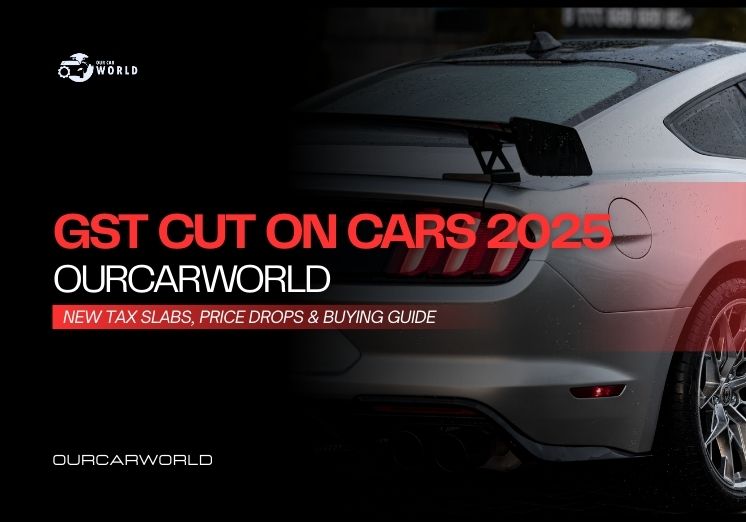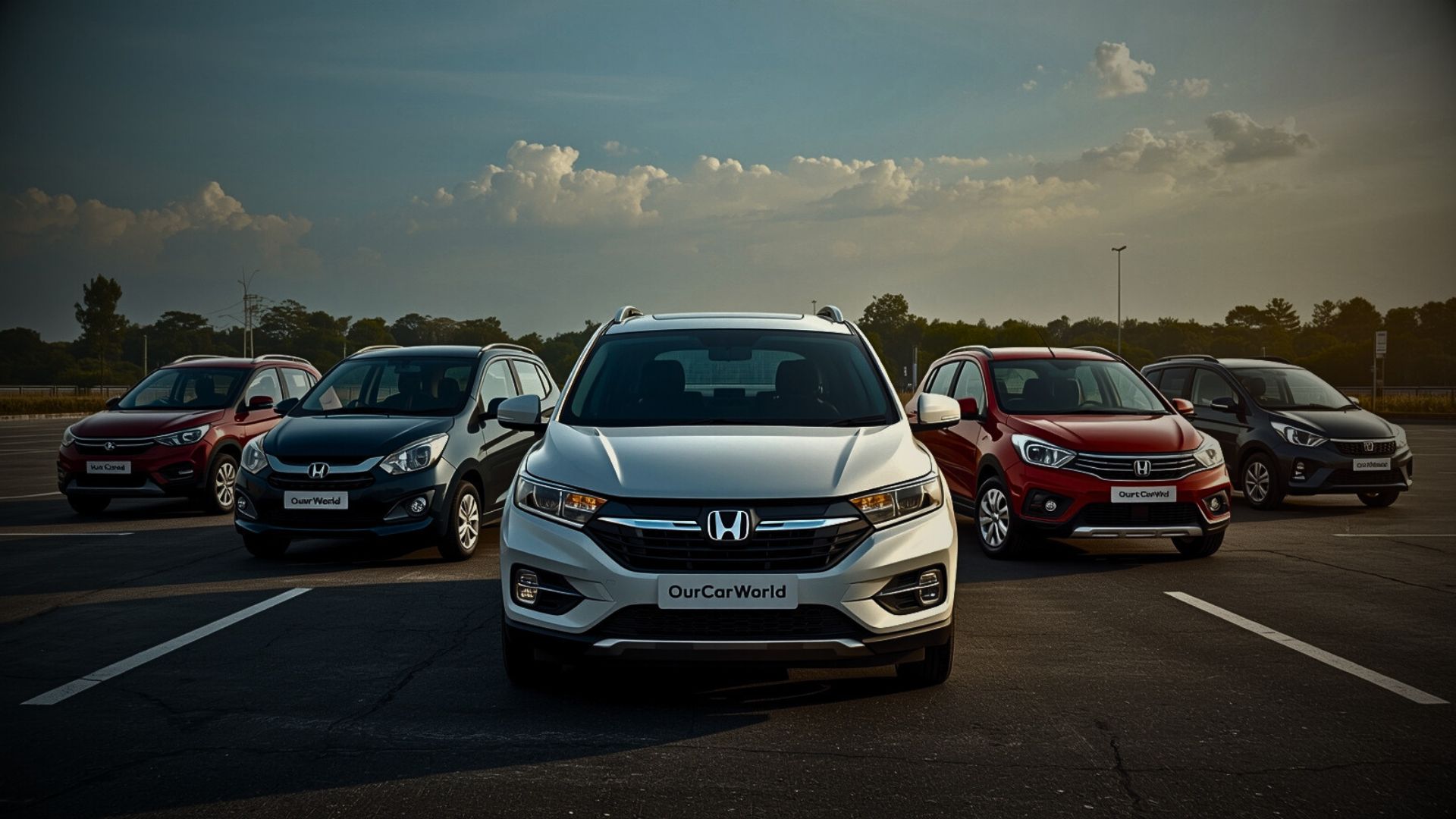GST Cut on Cars 2025: What Indian Car Buyers Need to Know
GST Cut on Cars 2025 has brought big relief for Indian buyers, with small cars now taxed at 18% and SUVs/luxury vehicles at 40%. Here’s what it means for you.
But here’s some good news for 2025 – the government has announced a major cut in GST rates for cars under GST 2.0, effective 22 September 2025. This move is expected to make car ownership more affordable for millions of Indian families and also boost automobile sales.
If you are planning to buy a new car – whether it’s a Maruti Wagon R, Hyundai Creta, or even a Mercedes – this blog will explain how much you can save, which cars got cheaper, and what you should do to maximize your benefit.
What is GST 2.0 and Why It Matters for Car Buyers?
Before we dive into numbers, let’s quickly recap.
Earlier, most cars in India attracted 28% GST + an additional cess depending on engine size and category. This meant car prices were inflated by heavy taxes, especially in the SUV and luxury segments.
In September 2025, the government introduced GST 2.0, restructuring the slabs to simplify and reduce the burden on car buyers. This reform is aimed at:
- Boosting car sales in India.
- Supporting middle-class affordability.
- Giving relief to auto manufacturers struggling with high inventory.
New GST Slabs for Cars in India
The new GST structure is simple compared to earlier complicated cess-based slabs.
Small Cars – 18% GST
- Definition: Petrol/CNG/LPG cars ≤ 1200cc and ≤ 4m length OR Diesel cars ≤ 1500cc and ≤ 4m length.
- Tax Rate: Reduced to 18% flat (down from 28% + cess).
- Impact: Most hatchbacks and entry-level sedans now cost significantly less.
SUVs and Larger Cars – 40% GST
- All vehicles that do not qualify as small cars fall under this slab.
- Tax Rate: 40% flat (previously 28% + up to 22% cess).
- While the overall tax remains high, removal of cess has simplified pricing and reduced final costs.
Luxury Cars
- Luxury cars and imported vehicles are also part of the 40% slab.
- For high-end cars, the price cut could range from ₹2–5 lakh depending on model.

Which Cars Got Cheaper After GST Cut on Cars 2025?
Let’s break it down brand by brand.
Popular Small Cars
- Maruti Suzuki Wagon R – Now cheaper by around ₹50,000–₹70,000.
- Hyundai Grand i10 Nios – Price cut of nearly ₹65,000.
- Tata Punch – Savings up to ₹80,000.
- Maruti Swift (2025 new model) – Price reduction of about ₹1 lakh.
SUVs
- Hyundai Creta – Savings of nearly ₹1.5 lakh.
- Maruti Brezza – Around ₹1–1.2 lakh lower.
- Mahindra Thar – Nearly ₹2 lakh benefit.
- Tata Harrier – Price cut close to ₹2.5 lakh.
Luxury Cars
- Mercedes GLC – Savings of ₹3–3.5 lakh.
- BMW X3 – Around ₹4 lakh reduction.
- Audi Q5 – Savings up to ₹4.5 lakh.
How Much Can You Save After GST Cut on Cars 2025?
Here’s a snapshot of approximate savings:
| Car Model | Old Price (Ex-showroom) | New Price (Ex-showroom) | Savings |
|---|---|---|---|
| Maruti Wagon R | ₹6.3 lakh | ₹5.7 lakh | ~₹60,000 |
| Tata Punch | ₹7.2 lakh | ₹6.4 lakh | ~₹80,000 |
| Hyundai Creta | ₹13.5 lakh | ₹12.0 lakh | ~₹1.5 lakh |
| Mahindra Thar | ₹16.0 lakh | ₹14.0 lakh | ~₹2 lakh |
| BMW X3 | ₹68.0 lakh | ₹64.0 lakh | ~₹4 lakh |
👉 Actual savings will depend on variant, dealer pricing, and state-wise registration charges, but the difference is real and significant.
Find trusted car service workshops :- Car Workshop Near You
What Should Car Buyers Do Now?
The GST cut is excellent news, but smart buyers can maximize benefits with a few strategies:
1. Check Dealership Billing Practices
Ensure your dealer is applying the new GST rate on your booking invoice. If you booked before September 22 but delivery is after, ask for revised billing.
2. Look for Old Stock Discounts
Dealers holding pre-GST stock may offer double benefits – older discount + GST cut. Bargain smartly.
3. Timing Your Booking & Delivery
Festive season (Diwali 2025) is coming soon. Expect additional festival discounts stacked with GST savings. If you are not in a rush, wait till October-November.
Impact on the Automobile Market
The GST reduction is expected to:
- Boost sales of hatchbacks and compact SUVs – the most popular Indian car segment.
- Revive luxury market – high-end buyers saving lakhs may accelerate purchases.
- Help automakers clear inventory faster and push new launches.
Tata Motors, Maruti Suzuki, and Hyundai have already announced they will pass on full GST benefits to customers.
Possible Challenges and Grey Areas
- Old Stock Confusion: Cars billed before the new GST date may not get the benefit unless re-invoiced.
- On-Road Price Variation: While GST is central, state RTO charges, insurance, and road tax still differ. So final savings vary city to city.
- Dealer Transparency: Some dealers may delay passing full benefits – always demand a breakup.
Conclusion – Overall, the GST Cut on Cars 2025 makes this the best time to buy.
The 2025 GST cut is undoubtedly a win for Indian car buyers. Whether you are looking for an affordable hatchback or a premium SUV, prices are more attractive than they’ve been in years.
If you were holding off your purchase due to budget concerns, now is the right time to revisit the showroom. With festive discounts coming soon, the combination of GST savings + dealer offers could make this the best time in years to buy a new car in India.
GST Car Price Reduction – Hindustan Times Auto
✅ FAQs
Q1. What is the new GST rate for small cars in India?
A: Small cars (≤1200cc petrol/LPG/CNG or ≤1500cc diesel, and ≤4m length) now attract 18% GST.
Q2. How much will I save on SUVs after GST cut?
A: SUVs now fall under 40% flat GST (no cess). Savings range from ₹1–2.5 lakh depending on the model.
Q3. Does GST cut apply to luxury cars?
A: Yes, luxury cars also fall under 40% slab. Buyers can save ₹2–5 lakh on premium models.
Q4. If I booked my car before GST cut, can I still get the benefit?
A: Yes, if your dealer re-invoices your booking after Sept 22, you should get revised prices. Always confirm with your dealer.
Q5. Will on-road price also reduce after GST cut?
A: Yes, ex-showroom price goes down. But remember, road tax and insurance are separate and state-specific.




Greetings from Ohio! I’m bored to death at work so I decided to browse your site on my iphone during lunch break.
I love the info you present here and can’t wait to take a look when I get home.
I’m shocked at how quick your blog loaded on my
cell phone .. I’m not even using WIFI, just 3G .. Anyhow, fantastic blog!